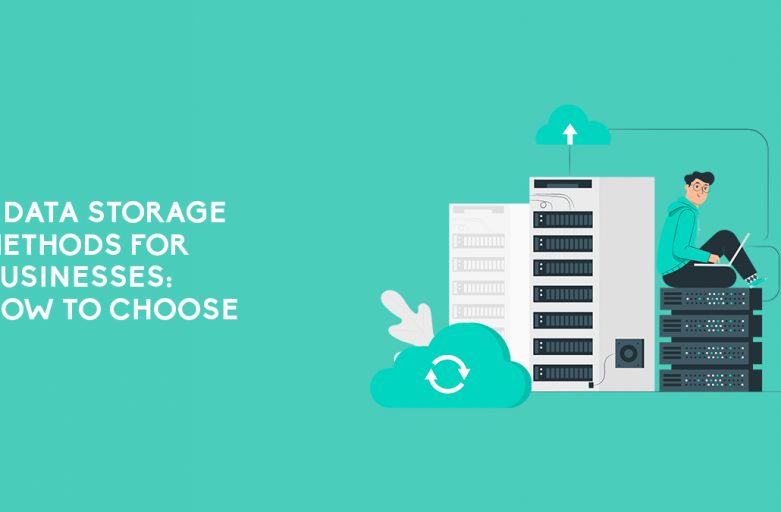
What are the data storage methods for businesses?
From emails, spreadsheets, customer information, video files, applications, back-ups, and many more—these things require plenty of storage. You might have enough right now, but as your business grows, your need for additional storage will also grow. This article will talk about the different data storage methods for businesses — such as on-premise, cloud, and hybrid cloud storage.
For businesses, data has a big role in making better decisions. It can be used for developing improved products, services, and solutions to better serve your clients. But first, you need a proper storage method. It’s also important that the data can be easily managed, protected, and accessed by the right people.
The question is, how do you choose the right data storage option? The first thing you need to do is to consider your storage needs. This refers to the capacity and the location from where you can access your data. After that, you can check the different options that can meet your organization’s requirements.
Data Storage Methods: On-Premises Storage

The first data storage option is considered the traditional method businesses use. Your data is stored on-premises, in server/s, computers, or other devices that your company owns and manages. On-premises storage refers to the local data center that you’ve set up in your headquarters and other offices.
Here are some of the benefits of an on-premise data storage method:
Access Your Data Offline
One of the advantages of an on-premises data storage method is that it can be operated without the internet. This option can provide you with the data you need anytime, no matter how slow your internet connection is. This means that you might not need to pay for a high-speed connection.
Control Over Hardware
On-premises data storage is recommended if you need to have a dedicated server within your headquarters that your team can handle on their own. If you have a tech-savvy team that can perform upgrades and maintenance, this option can give you flexibility in your storage needs.
Having data in an on-premises environment allows you to have full control of what happens to your files and applications. This option is recommended if you have a dedicated IT team that can manage and maintain your servers.
Data Storage Methods: Cloud Storage

Using cloud storage involves storing your data in remote servers maintained by a service provider. The third-party vendor sells the storage space to you. You use the internet to access your files and applications, which means that your team can access them anywhere — even at home or remotely.
If you’re considering the cloud storage method, here are its advantages.
Less Need For Hardware
As data is stored in the cloud, which is accessed via the internet, this storage method requires less hardware. This means that you can have a team accessing the same resources from different destinations in the world. The third-party service provider will also be responsible for the maintenance of the servers. If you need upgrades or a change in your storage plan, you can ask for their assistance.
Lower Upfront Costs
Because the need for your servers is lessened, storing your data in the cloud can help lower your costs. As the service provider is responsible for the maintenance, your IT team can focus on other tasks. Additionally, compared to purchasing hardware, cloud storage is offered on a subscription basis, which means that you can start small and downgrade or upgrade as the need arises.
Data Storage Methods: Hybrid Cloud Storage

Both on-premise and cloud offer several benefits for your business, so you might also consider combining the two options. Hybrid cloud storage involves an on-premises infrastructure with a public cloud. This option is beneficial if you want the option where you can put your workloads and data.
Supplement Your On-Premise Storage
A hybrid cloud storage setup is a viable option if you’re looking to extend your on-premise data storage. This gives you flexibility on how you can categorize and manage your data. The addition of the cloud also gives you the ability to respond to growing storage needs faster.
Improved Data Security
By combining the features of both data storage methods, you can better protect your data. For example, some companies prefer to store more sensitive files in their local data center and free up space by using the easily upgradable storage capacity of the cloud. Hybrid cloud solutions also offer more advanced security and protection compared to what organizations may implement in-house.
Key Takeaway
There are two ways you can store your data — on-premise or on the cloud. Each one has its advantages over the other, but both can be combined so your business can take advantage of both of their features.
If you need more information on the different data storage methods for businesses, you can contact us here at CT Link. We can help you choose and implement the option that can solve your current and future storage needs.

